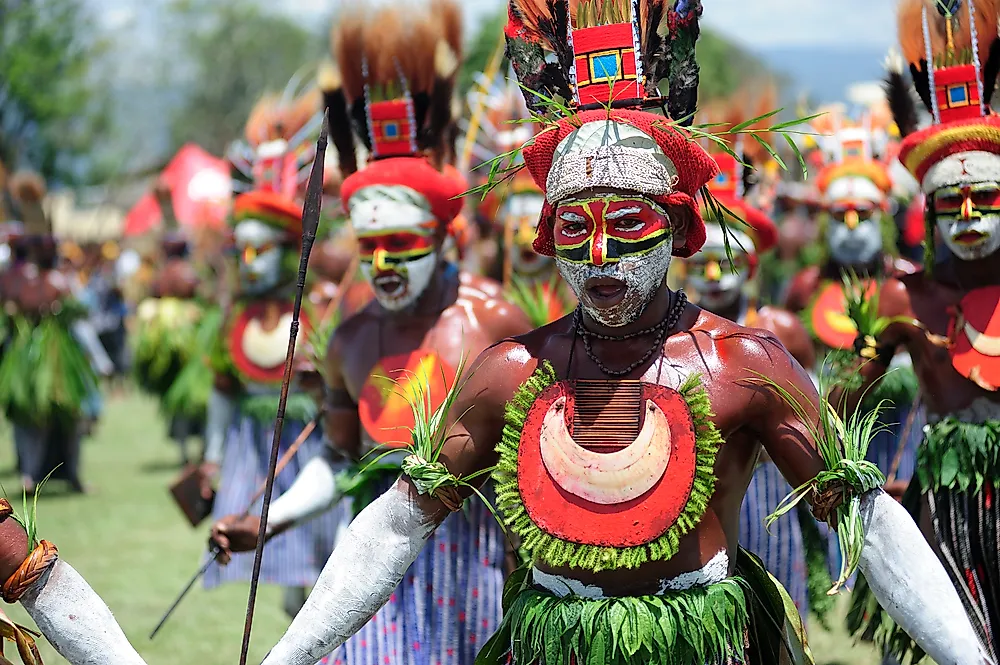Papua New Guinea, an archipelago located in Oceania, is a fascinating study of cultural and religious diversity. Home to over 800 different languages and numerous ethnic groups, this nation epitomizes a confluence of ideas and beliefs. Among the myriad of belief systems, Christianity is the predominant faith, yet it exists alongside traditional tribal beliefs, leading to a unique tapestry of faith that reflects both ancient customs and contemporary religious practices.
Christianity debuted in Papua New Guinea in the 19th century, heralded by European missionaries who sought to evangelize the islanders. The arrival of these missionaries marked the beginning of significant religious transformation in the region. Over time, churches proliferated, and a significant portion of the population professed Christianity, subscribing mainly to denominations such as Roman Catholicism, Anglicanism, and various evangelical sects. Yet, rather than displacing the indigenous beliefs completely, Christianity has often been woven into the existing cultural fabric.
This phenomenon is known as syncretism. It is the process whereby differing beliefs and practices are merged, resulting in a distinct religious expression that incorporates elements from both indigenous and Christian traditions. In Papua New Guinea, this syncretic blend can be observed in various practices and rituals. For instance, during Christian ceremonies, traditional music, dance, and art forms frequently accompany worship, creating a dynamic and holistic religious environment.
At the heart of the religious landscape in Papua New Guinea is a profound respect for ancestors and nature, aspects that were integral to tribal belief systems before the arrival of Christianity. Ancestor veneration remains a critical component of spiritual life, where the deceased are believed to maintain a presence and influence over the living. In many communities, prayers to ancestors coexist with prayers to God, reflecting a duality that persists in the hearts and minds of the people.
Moreover, traditional rituals often continue in tandem with Christian observances. Events such as weddings or funerals might incorporate both Christian blessings and tribal rites, underscoring the importance of cultural identity in spiritual practices. This ecological viewpoint, considering the natural world as alive with spiritual significance, resonates with indigenous perspectives and enriches the Christian experience, allowing individuals to remain connected to their heritage.
The reasons for the enduring coexistence of Christianity and tribal beliefs are complex. One might argue that the adaptability of Christianity allows it to integrate seamlessly with existing cultural practices, providing spiritual fulfillment while preserving historical ties. This cultural resonance fosters a sense of belonging among the people, bridging the gap between the sacred and the secular, the past and the present.
In many ways, this syncretism is emblematic of a desire for continuity and coherence in spiritual life. The blending of beliefs is not merely a religious adaptation; it is a profound expression of the lived experience of the people of Papua New Guinea. The intricate layering of faith not only serves individual spiritual needs but also upholds community identity in a rapidly changing world.
Scholars often grapple with this interplay between Christianity and indigenous practices, probing deeper into the implications of such a fusion. From a Christian perspective, one must consider what it means for the essence of the faith to coexist so prominently with traditional customs. Does this syncretism detract from the purity of Christian doctrine, or does it provide a more complete understanding of the divine through the lens of diverse cultural narratives?
The question of whether and how a syncretic form of Christianity can serve to enrich rather than dilute the Gospel is significant. It invites theological reflection on the nature of God in contexts that are not inherently Western. Theologians may find value in recognizing that God’s presence is not restricted to a singular cultural expression. Instead, Christianity can thrive in a multitude of contexts, illustrating the universal nature of God’s grace.
Furthermore, the resonance of these religious practices raises inquiries about the identity of the Christian church in Papua New Guinea. Does the church serve merely as a shelter for Western religious ideals, or does it emerge as a vibrant community where faith is truly lived and incarnated? For many Papua New Guineans, the answer lies squarely in the celebration of both their indigenous heritage and their Christian faith, where each informs and enhances the other.
This synthesis has implications beyond theology; it also informs social cohesion within communities. The shared practices and beliefs foster unity, serving as a counterbalance to the heterogeneous nature of society in Papua New Guinea. By converging around a common faith that acknowledges their historical roots, people build bridges that allow for collaboration and mutual support among diverse groups.
As globalization continues to influence Papua New Guinea, the landscape of religious practice is likely to evolve further. Outside influences may challenge traditional customs, but they may also forge new expressions of faith that resonate with the lived experiences of the people. The ongoing dialogue between Christianity and tribal beliefs, therefore, remains a critical area of exploration—reflecting a nation in the midst of profound change, while still deeply rooted in an eclectic, vibrant past.
In conclusion, the religious milieu of Papua New Guinea captivates scholars and observers alike, serving as an intricate testament to the resilience of indigenous beliefs amidst modern pressures. The rich interplay between tribal spirituality and Christianity highlights not only the complexity of faith in this region but also the enduring human quest for understanding and connection within the divine narrative. As such, the religious landscape here stands as a compelling case study of cultural resilience and spiritual adaptation.



